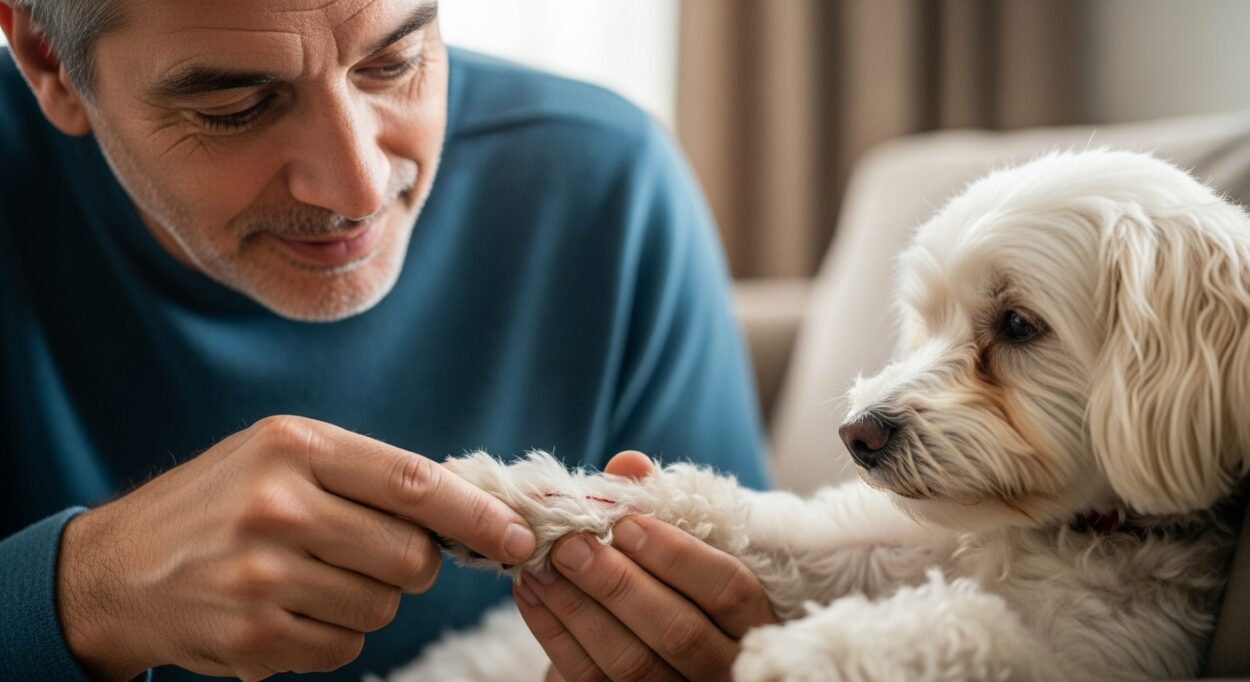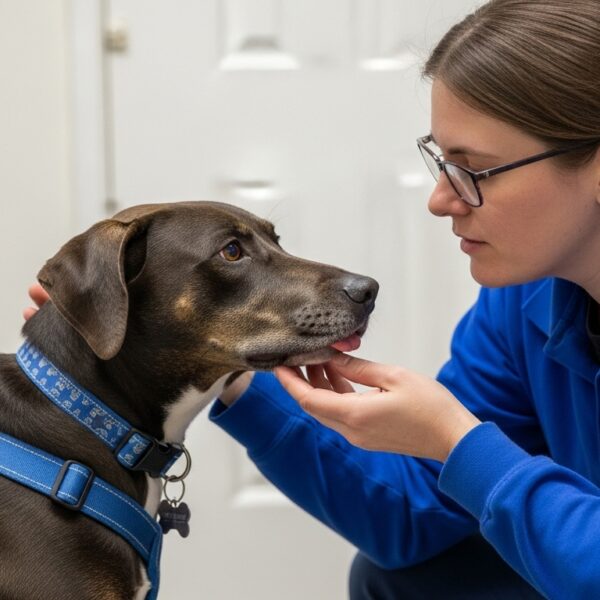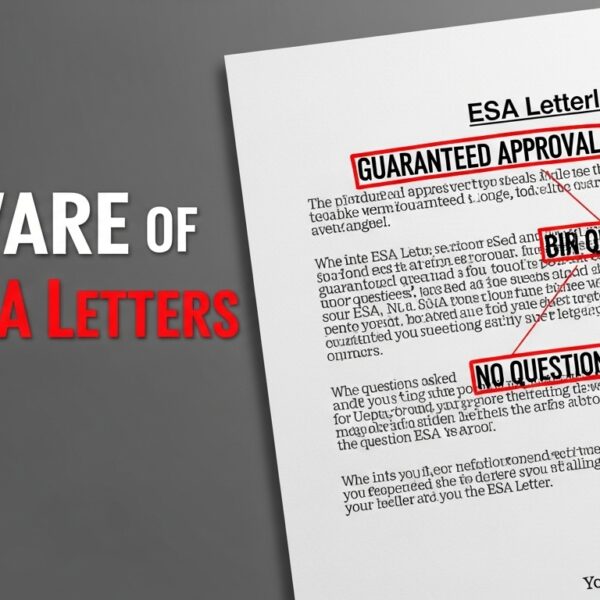Table of Contents
Introduction
When you bring a dog into your home, they become family. But what happens if your best friend faces an accident or emergency? As a dog owner, learning some life-saving first aid tips for dogs can make a huge difference—sometimes even saving your pup’s life before you get to the veterinarian. In this 2025 guide, we’ll keep things simple and practical, so you’ll know exactly what to do when your buddy needs you most.

1. How to Create a Dog First Aid Kit
The first step in being prepared for emergencies is to have a dog-specific first aid kit ready at home and when you travel. Here’s what you’ll need:
- Sterile gauze and non-stick bandages
- Adhesive tape (dog safe)
- Digital thermometer
- Tweezers and blunt-ended scissors
- Hydrogen peroxide (for inducing vomiting—only as instructed by a vet)
- Saline eye solution
- Dog-friendly antiseptic wipes
- Emergency blanket
- Muzzle (in case your dog is scared or in pain)
Tip: Keep your vet’s phone number and an emergency animal hospital address inside the kit.
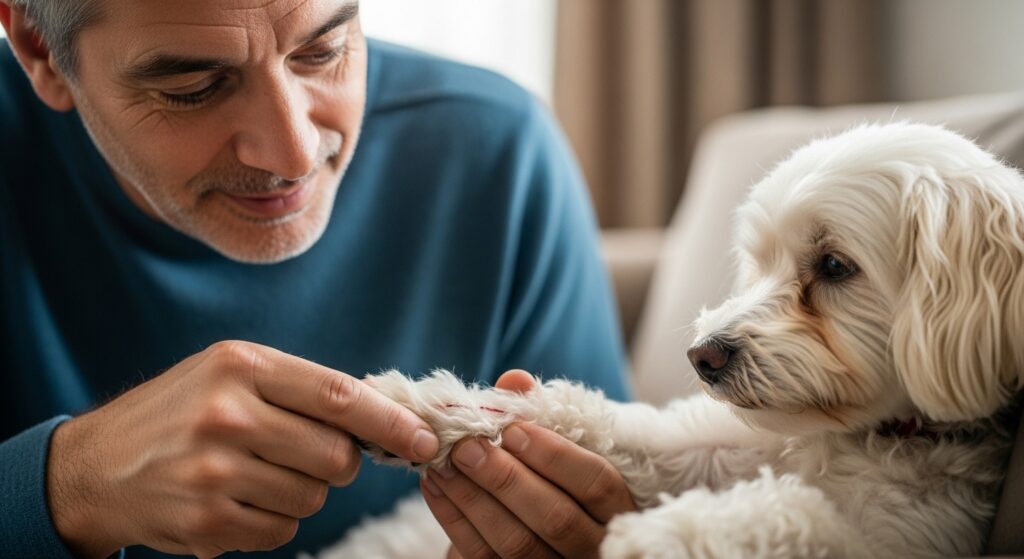
2. Dealing with Cuts and Bleeding
Dogs are curious creatures and sometimes get into mishaps. If you notice bleeding:
- Stay Calm: Your dog needs you to be steady.
- Muzzle if Needed: Even friendly dogs may bite when hurt.
- Apply Pressure: Use a clean cloth or gauze to gently press on the wound until bleeding stops.
- Bandage Carefully: Secure a bandage around the area, but not too tight!
- See the Vet: Even small wounds can become infected.
Remember: Never use human bandage materials that stick to fur or skin.
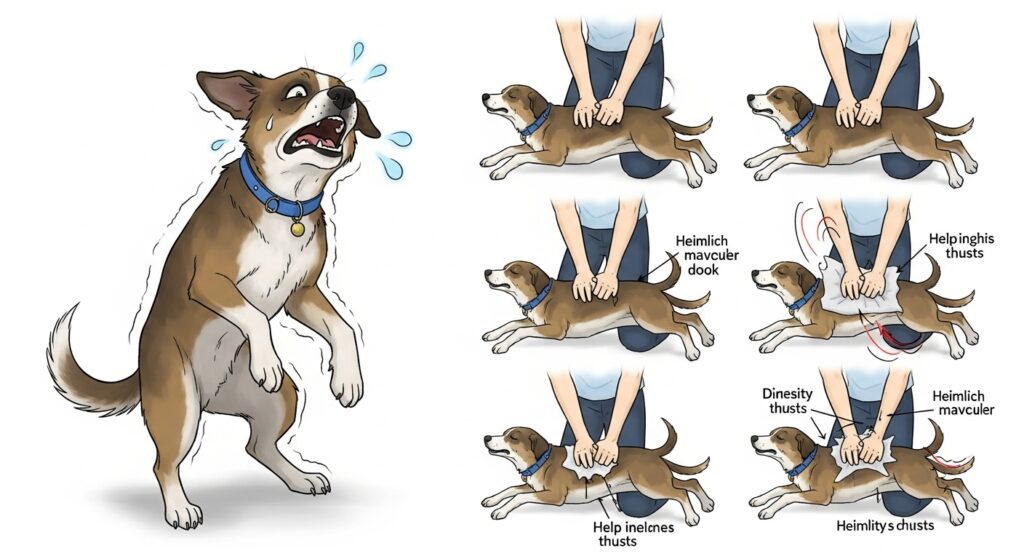
3. What To Do If Your Dog Is Choking
Choking can be silent and scary—especially if your dog suddenly starts pawing at their mouth or coughing.
- Look for Objects: Open their mouth (carefully!) and check if you can safely remove the object.
- Don’t Push Further: Never push an object deeper down the throat.
- Heimlich Maneuver for Dogs:
- For small dogs: Hold them upside down by the hips and gently shake or pat their back.
- For large dogs: Stand behind them, place your hands just below their ribcage, and give a quick, gentle thrust inward and upward.
- Check Their Breathing: If your dog is still struggling, rush to the vet.

4. Handling Allergic Reactions
A bee sting, new food, or some plants can trigger scary allergic reactions. Signs include swelling, vomiting, or difficulty breathing.
- Remove the Cause: Take out stingers or remove your dog from the allergen.
- Use Cool Compresses: For swelling, apply a damp, cool cloth.
- Call Your Vet: Allergic reactions can get worse quickly.
- Never Give Human Medicine: Common meds (like Benadryl) must only be used with vet advice and correct dosage.
Early action is crucial—don’t wait it out.

5. What to Do in Case of Poisoning
Dogs can eat all sorts of things they shouldn’t—chocolate, medicines, houseplants. If you think your dog has been poisoned:
- Don’t Panic: Stay calm so you can help!
- Check for Symptoms: Vomiting, shaking, drooling, or collapse are warning signs.
- Collect Evidence: Save what your dog ate (packaging, plant pieces, etc.).
- Call Your Vet or Poison Helpline: Give them details—they may advise you on next steps.
- Never Try to Make Your Dog Vomit Without Advice: It can sometimes make things worse!
Quick Recap
Knowing these life-saving first aid tips for dogs can truly change the outcome of an emergency. Always keep your dog’s medical info (like medications, allergies, vet contact details) somewhere easy to find. And remember: first aid is only step one. Your vet is your best friend for serious issues!
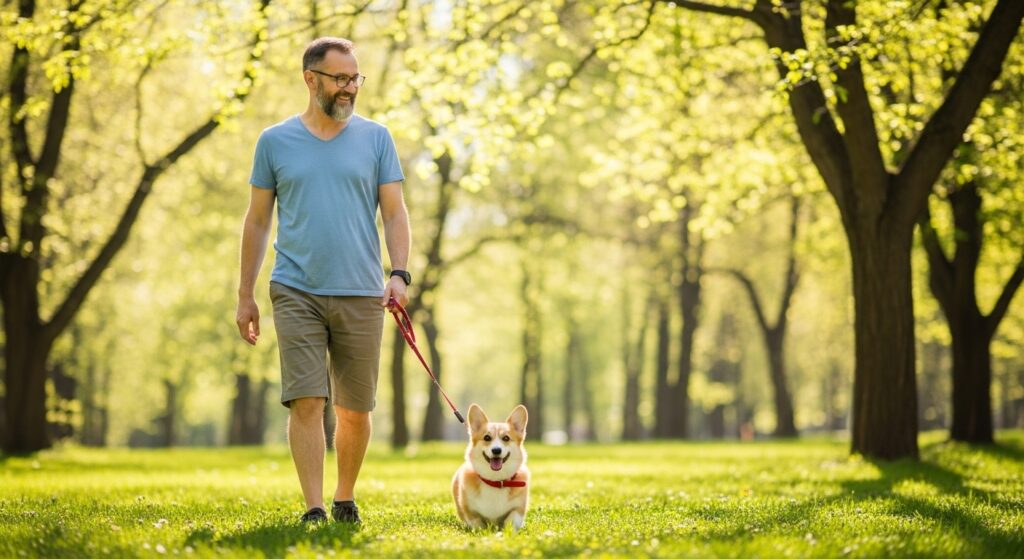
FAQs: Life-Saving First Aid Tips for Dogs
Q: Can I use a human first aid kit for my dog?A: Some basics work for both, but dogs need their own essentials—like pet-safe antiseptics and a muzzle.
Q: What if my dog won’t let me treat their injury?A: Never force it if it puts you in danger. Use a muzzle if safe, and call your vet ASAP.
Q: How can I avoid common dog emergencies?A: Supervise play, dog-proof your home, and keep toxic items out of reach.
Q: Should I have a pet CPR course?A: Yes! Knowing canine CPR can save your dog’s life in some emergencies.
Q: Is it okay to give my dog human medicine?A: Never give any medication without your vet’s directions. Dosages and effects are different for dogs.

